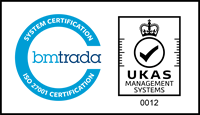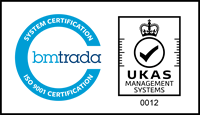Posted on: Wednesday December 08, 2021

Employee wellbeing is everywhere in the HR world these days – but it can feel a bit woolly. How do you get quantifiable answers on which benefits are working and whether they’re helping your employees to perform at their best?
To realise its full value, wellbeing requires a truly holistic approach, one that doesn’t just ‘provide a benefit’, but monitors, reviews and ensures a return on investment financially whilst extending the employee lifetime value too.
Whilst we should support and measure the wellbeing of the individual, it is intrinsically linked with measuring and understanding the wellbeing of the organisation in its entirety.
So how do we measure ROI of wellbeing?
Chances are the HR system you use to administer your reward and benefits package, including wellbeing, comes with streams of usage data. The average HR team is sitting on a data gold mine: data which can be used to improve decisions, make employees happier and optimise processes.
Imagine the value data like this can add to a company. In theory, you can find out once and for all what employees value and which wellbeing benefits are worth the investment. The challenge is how to leverage this insight to enable effective, validated decision making.
Daily data
We are empowered by how technology enables us to access our own data. Think of activity trackers like Fitbit, where we can view and make informed decisions based on the data which is being reported back to us.
As an individual, we can use this data to improve aspects of our lives and potentially drive or change behaviour. For example, if we wanted to get fitter and increase our daily mileage, we could use our step count data to drive behaviours which would help reach the objective i.e. increase steps per day.
It should come as no surprise that the importance and versatility of personal data are continually being developed both for commercial purposes and in organisations, particularly for HR and people functions.
Previously, HR decisions could be perceived to be based on gut feel and not on solid research and analytics. However, HR are now much more sophisticated in capturing and analysing data, which helps us continually adjust our employee benefits to deliver maximum value and attract the best quality employees.
Here are three ways to measure how employees see your wellbeing benefits:
1. DEMOGRAPHICS
By collecting data regarding the demographics of your organisation, you can determine a baseline breakdown of your organisation’s makeup. In turn, this will help you deliver the most relevant benefits to each group. For example, younger members of the workforce may value financial wellbeing benefits like a tech benefits scheme or affordable loans, whilst more mature staff members may be balancing work with taking care of their family, so appreciate flexible work benefits like holiday exchange.
2. ANALYTICS
By using analytics to see what’s meaningful to employees (either via measuring uptake of benefits via your employee experience portal’s management system, or by using methods such as surveys), and tailoring your benefits offer to fit the needs of your workforce, you can ensure that relevance is at the forefront of the reward agenda. Remember the importance of getting employees’ views, since the analytics won’t show you if something is missing or tell you why a benefit isn’t being used.
3. COMPARE TO AVERAGES
Keeping abreast of the trends both nationwide and in your sector will help give an indication as to how your offer stacks up next to the competition. Furthermore, by understanding what other businesses are doing, particularly businesses that are doing wellbeing right, you can find new ways to progress your strategy.
In summary, HR teams should look to develop their wellbeing offer using analytics to inform their approach. Being smarter about the kind of data we collect and use will allow us to deliver best-in-class programmes that are constantly evolving based on the needs of employees.
To find out more about how Personal Group can help support your employee wellbeing, call 01908 605000 or email letschat@personalgroup.com.
Don’t forget to subscribe to our blog for weekly thought leadership straight to your inbox.
Looking to step up your wellbeing game?
Transform™ powered by TruConnect and delivered by Hapi completes a total wellbeing solution - with hundreds of workout classes, motivational messages, mental health support, healthy recipes, tools for a better night’s sleep and stress management techniques.
Cost vs Value – What Really Matters in Health Benefits?
When it comes to creating employee health benefits, there’s always a tug-of-war between keeping costs low and focusing on the actual value those benefits bring.
Posted on: 11 April 2025 by Andrew Walker, New Business Development Director
Top Tips to Improve a Misfiring Recognition Strategy
Whether you’re a professional footballer, engineer or care worker, happiness at work relies on feeling valued, appreciated and respected.
Posted on: 28 March 2025 by Andrew Walker, New Business Development Director
Brace Yourselves: Reward Storm Incoming
In even the most optimistic assessment of the current situation, it is hard to foresee a situation where a substantial portion of workers are not left underwhelmed by their pay offers in 2025.
Posted on: 13 March 2025






